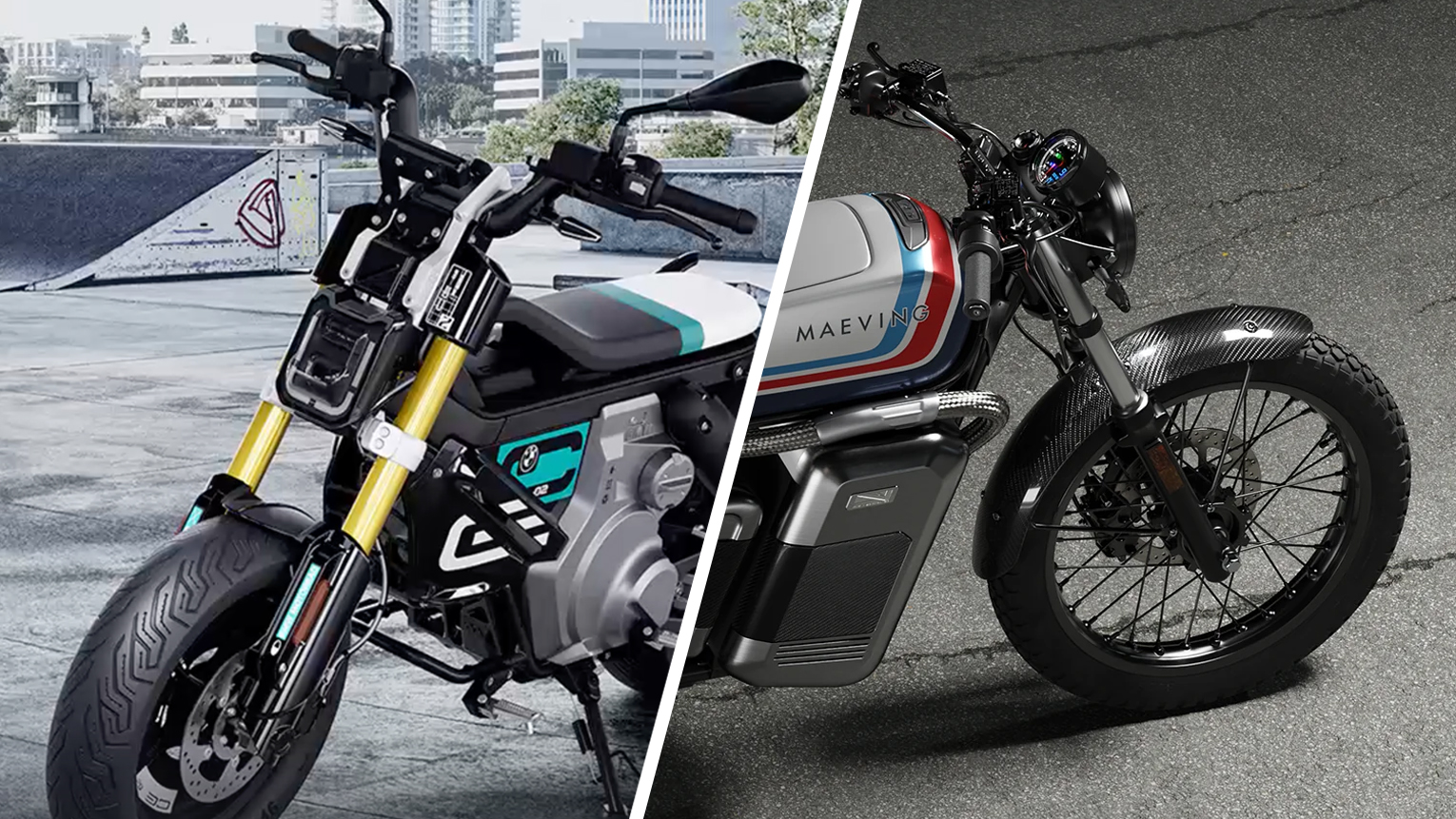
Electric cars might be under fire for being overpriced, over-reliant on unreliable public charging networks and underperforming battery ranges, but one of the most efficient ways to navigate the busy urban environment has always involved two wheels.
What's more, today's scooters and learner-friendly motorcycles haven't escaped electrification, and we now have a solid choice of battery-powered models that can silently whisk you to work as you simultaneously dodge traffic and any local emissions taxes the authorities may have imposed.
Granted, going electric is still predominantly pricier than opting for petrol-powered counterparts, but there is less in the way of regular maintenance (often no chains to oil and air filters to replace). You also have the option of topping up from a standard domestic wall socket, which can be pleasantly inexpensive if timed correctly.
The lack of clutch levers and gearing also makes electric motorcycles and scooters generally more approachable to ride for the newcomer.
With that in mind, we’ve collated some of the best learner-friendly electric bikes and scooters on sale now, drawing on first-hand riding experience, to deliver our recommendations for those looking to make the two-wheeled EV switch.
1. Kawasaki Z e-1
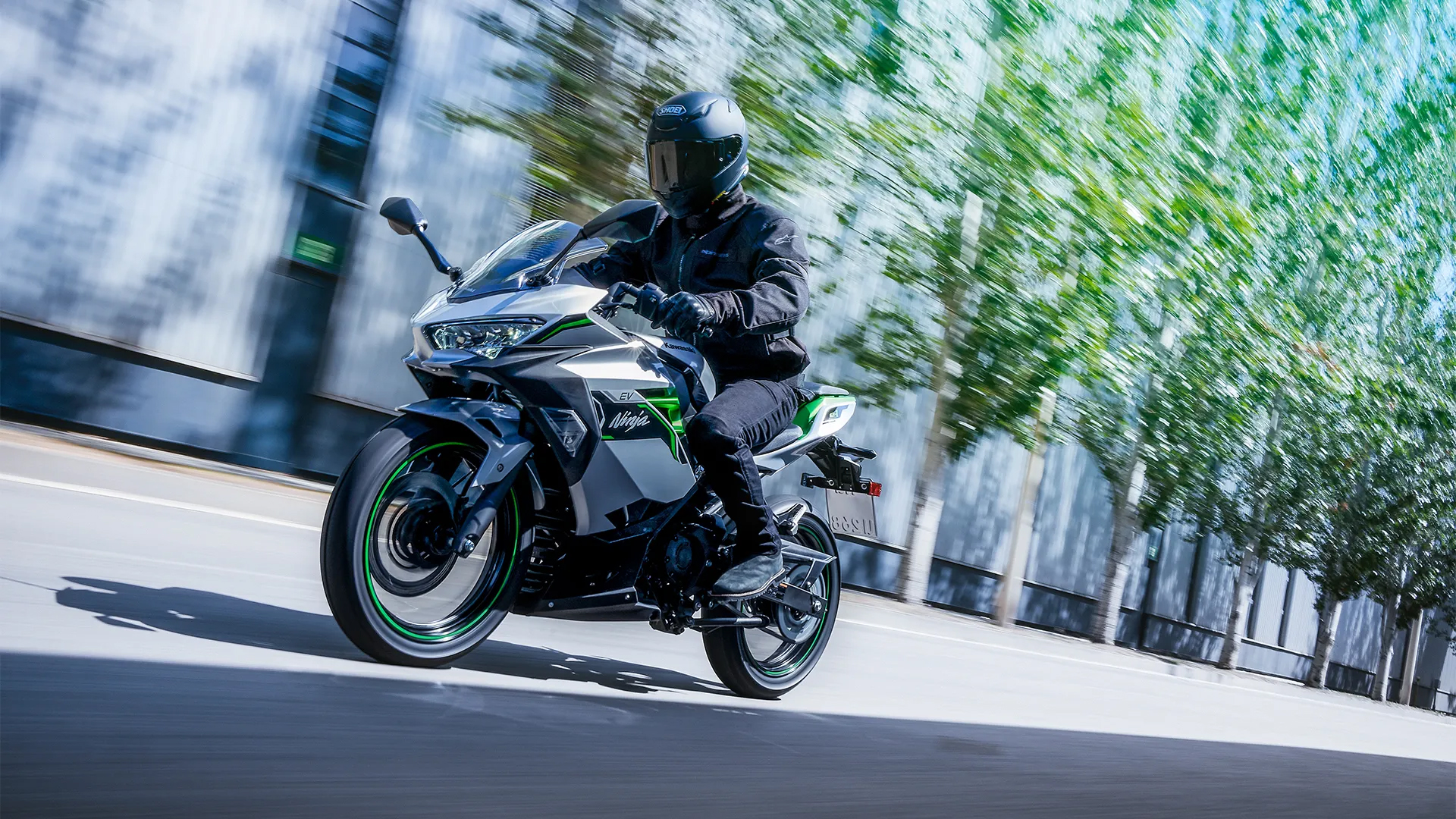
Available in either the naked version (the Z e-1) or a fully-fared Ninja e-1, the latest crop of small capacity electric motorcycles represents Kawasaki’s first move towards electrifying its two-wheeled offerings. In doing so, it's arguably the first major manufacturer to inject some battery power into the A1 Light Motorcycle category.
Although the zippy Z e-1 can only manage a top speed of 52mph (61mph for short bursts via an e-boost mode) and an official range of 44 miles (expect that to be more like 20 in the real world), it can be ridden by those as young as 17 in the UK via the Compulsory Basic Training initiative, or 16 years old in the US (depending on your state).
This makes it a very easy way for younger, less experienced riders to get on the open road, while the distinct lack of oily parts makes it a doddle to maintain and keep running – but you'll still have to maintain an old-fashioned chain.
That said, ensure it is cleaned, the tires are inflated and the brake pads checked intermittently and there’s little else to worry yourself with outside of the standard service intervals.
We spent a few weeks with the Kawasaki Z e-1 model recently and came away impressed by its 'big bike' approach, with the powerful braking system, front forks and rear swing arm clearly borrowed from its latest petrol-powered machines.
There's also a clever 'Walk Mode' that offers a little electrical assistance when moving the bike around at slow speeds. It even works in reverse, so backing the bike out of a hilly parking spot is now simple.
Therein lies the real draw, as this is the first electric motorcycle of its kind to be produced by a manufacturer with a history as long and illustrious as that of Kawasaki. But we were a little underwhelmed by the range – it's just not enough to even consider venturing further than 10 miles away for fear of running out of juice on the return leg.
In terms of pricing, it is slightly cheaper than BMW's futuristic CE 02 scooter (mentioned below) at £7,199 (around $9,000 / AU$14,000) but a lot more expensive than something like Super Soco's cheap and cheerful TC Max, which simply can't compete on build quality.
2. BMW CE 02
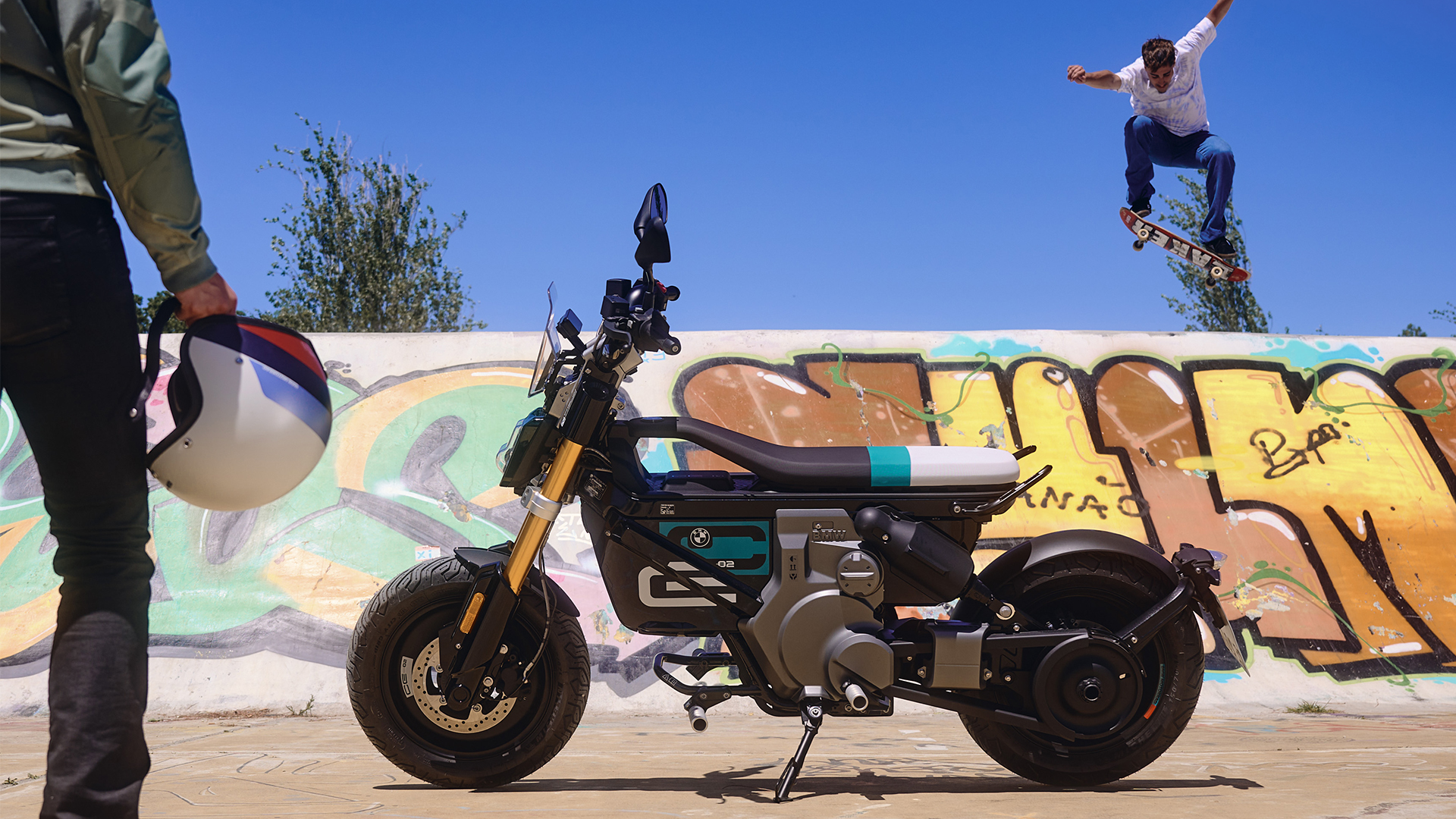
First unveiled late last year to offer something original, eye-catching and slightly off-the-wall to join the German giant's more traditional CE 04 electric scooter, the BMW CE 02 is a 125cc equivalent that leans heavily on slightly madcap futuristic styling and cutting-edge tech to tempt punters to part with their budgets.
It’s a fairly hefty outlay, too, with prices starting at £7,450 (or around $9,400 / AU$14,300), but there’s a lot to love about this bike. Not only is the top speed a lofty 60mph for more potent (and expensive) 15hp versions, but it features state-of-the-art regenerative charging that helps keep the battery packs primed.
In terms of electric range, the CE 02 maxes out at 56 miles in the pricier, more powerful, dual-battery version, but comes in at a respectable 28-miles in even the learner-friendly entry-level models.
The asking price might seem steep compared to some cheaper Chinese rivals, but BMW's offering feels extremely well-built and packs a neat color TFT display that acts as a smartphone-compatible infotainment system, delivering navigational instructions and a lot more through a partner app.
3. Maeving RM1S
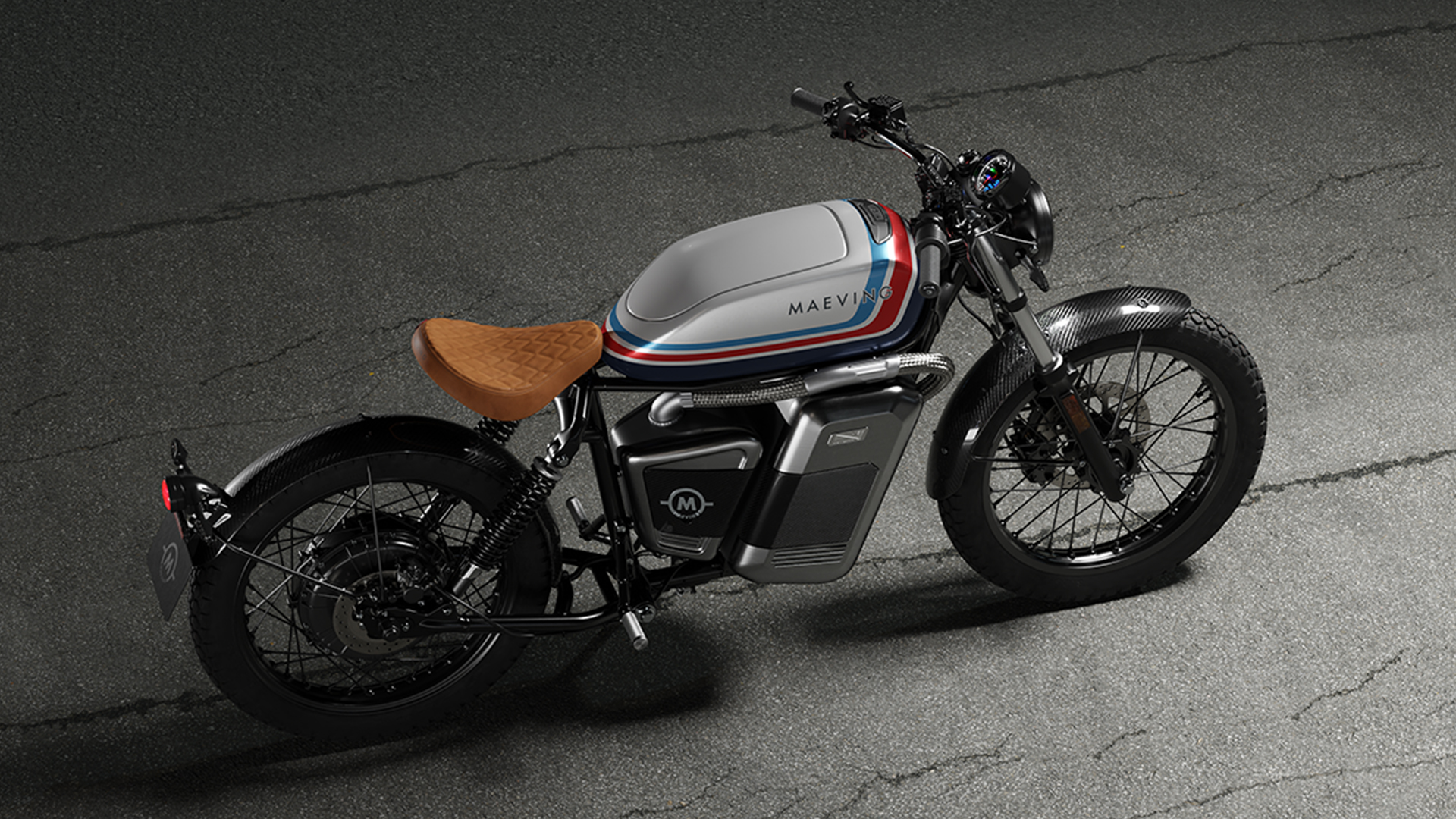
Coming in hot and looking like little else on sale today, the retro-tastic Maeving RM1 model has already made a big impact on the urban motorcycling scene. But now it's been given a fiery makeover, with more power and a higher top speed allowing it to travel further and faster.
The 'S' model comes with the same innovative battery packs as the original, which can either be charged on the bike or removed and topped up at home or work. But a punchier 7kW continuous power electric motor (10.5kW peak) allows this lithe machine to reach the heady top speeds of 70mph.
It can travel up to 80 miles on a single charge, depending on the riding mode and terrain, while charging takes around four hours from a typical domestic socket to achieve 20-80 per cent top ups.
We are particularly smitten with the retro touches, such as the diamond stitch single seat, the analogue speedometer and spoked rims. It comes in eleven cool colors, too.
Currently, pre-orders are being taken for first UK deliveries in July this year, with the model costing £7,995 – or about $10,000 / AU$15,300 – but there's no word on whether it will be shipped outside of Europe just yet.
4. Ryvid Anthem
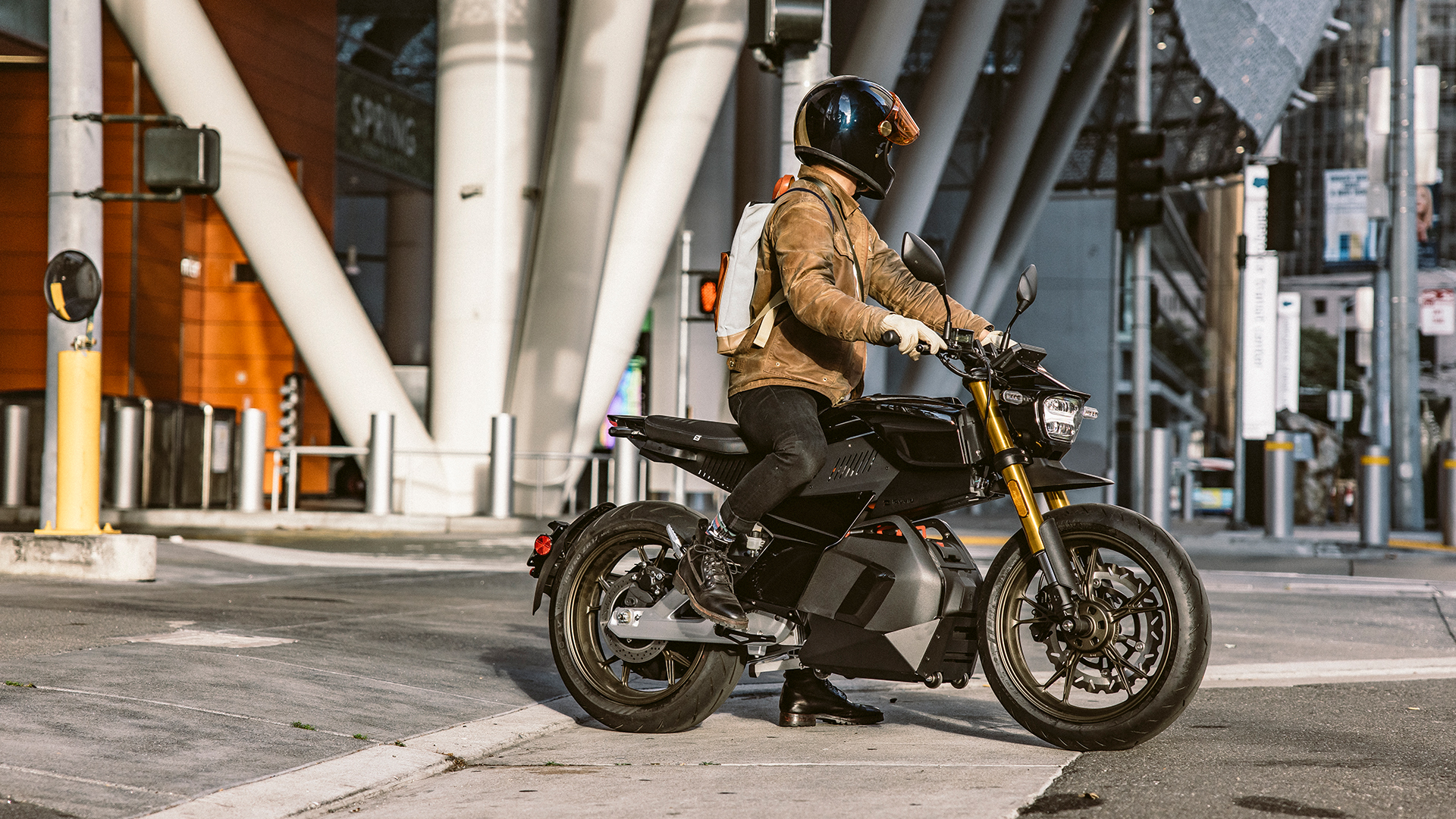
Hailing from the sunny Californian coastline, Ryvid is relatively new to the two-wheeled market but has played a trump card in the purposeful and properly clever Anthem.
The bike features an innovative aerospace-inspired frame that keeps the weight to an absolute minimum (although it still weighs 142kg), while the intelligent 4.3kWh battery storage compartment can easily be removed from the base of the bike and taken away to charge anywhere, any time.
What's more, the seat height can be adjusted from 30 to 34 inches in a few simple steps and the 4.9-inch digital display delivers crisp, clear information at a glance. It has all been designed for the casual every day rider and as a result, makes for a superb city bike.
Power output is on a level with the aforementioned Maeving RM1S, with a constant rated power output of 7.5kW and a peak of 14kW, resulting in a max speed of around 75mph. This is all kept in check by large, hydraulic quad-piston calipers and 320mm discs at the front (twin piston caliper, 240 mm discs at the rear) and upside-down front forks to soak up the bumps.
Orders are being taken now, with a sticker price of $8,995 (around £7,150 / AU$14,000), but we don’t expect the bike to be shipped outside the US for the time being.
5. Super Soco TC Max
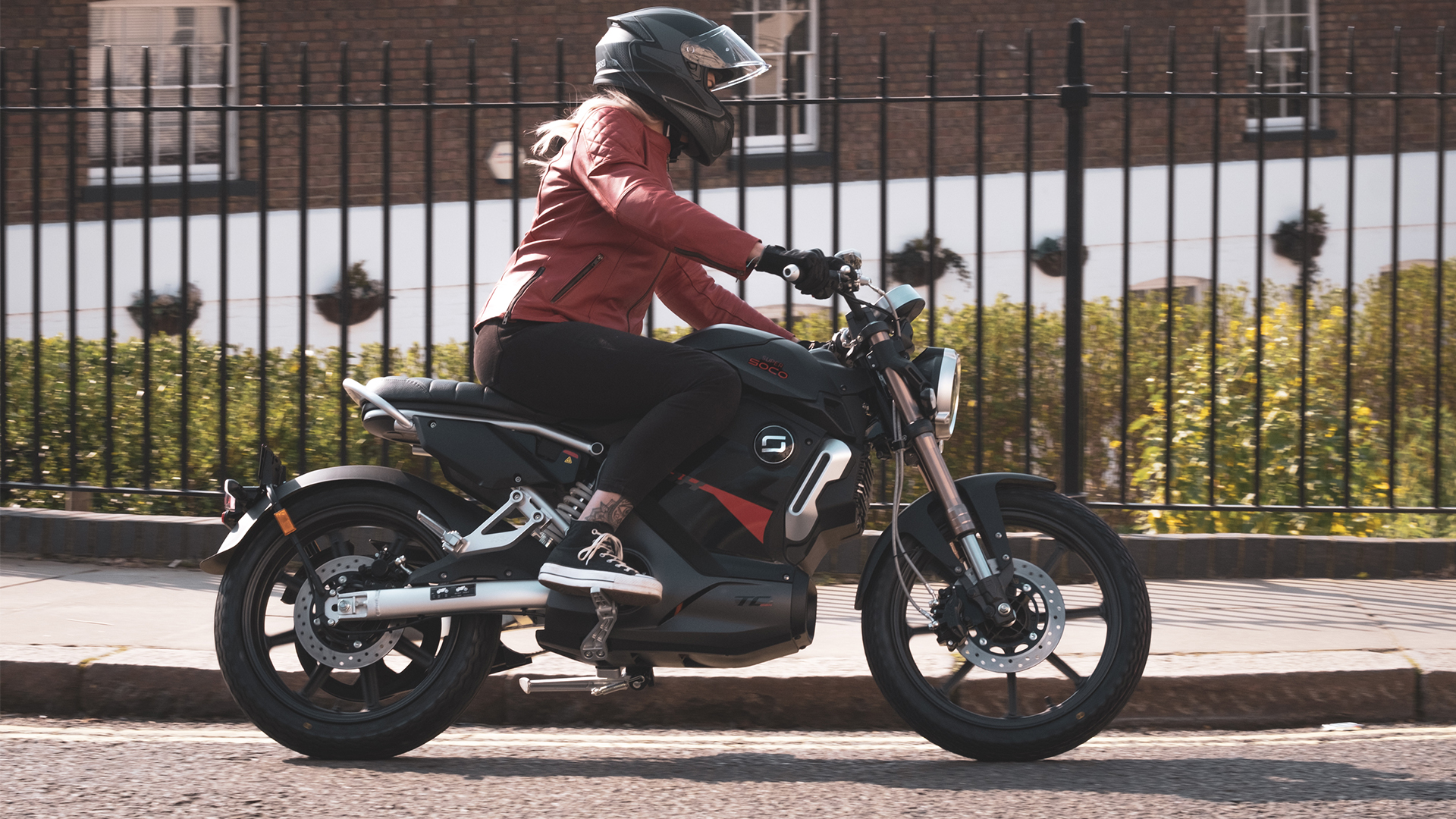
Chinese electric motorcycle and scooter-maker Super Soco has been exporting its wares for the best part of a decade now and, as a result, offers an extremely affordable line-up for those who want something light and simple to pop to the shops or venture to the office on.
However, it is currently rebranding as Vmoto in many territories (see below), with a refreshed line-up of clever electric motorcycles, but the TC Max is still readily available and mightily affordable.
Granted, the 3kW (5kW peak output) motor can't compete with some of the more potent options we’ve mentioned so far, while the brakes, suspension and overall build feel decidedly cheap. But it is as simple as they come and still manages a top speed of around 58mph and an electric range of up to 60-miles, which is plenty enough for the majority of casual riders.
Above all else, it weighs around 80kg, making it much lighter and therefore easier to move around at slower speeds, particularly for those petite riders or newcomers who may not be as confident perched atop weightier machines.
Like many bikes mentioned on the list, the chunky battery packs can be removed from the bike and charged anywhere, or topped up from a domestic socket while still in place. However, it is the price that will be the biggest boon for many, as it retails at just £4,199 – or around $5,200 in the US or AU$8,000 in Australia.
6. Vmoto Stash
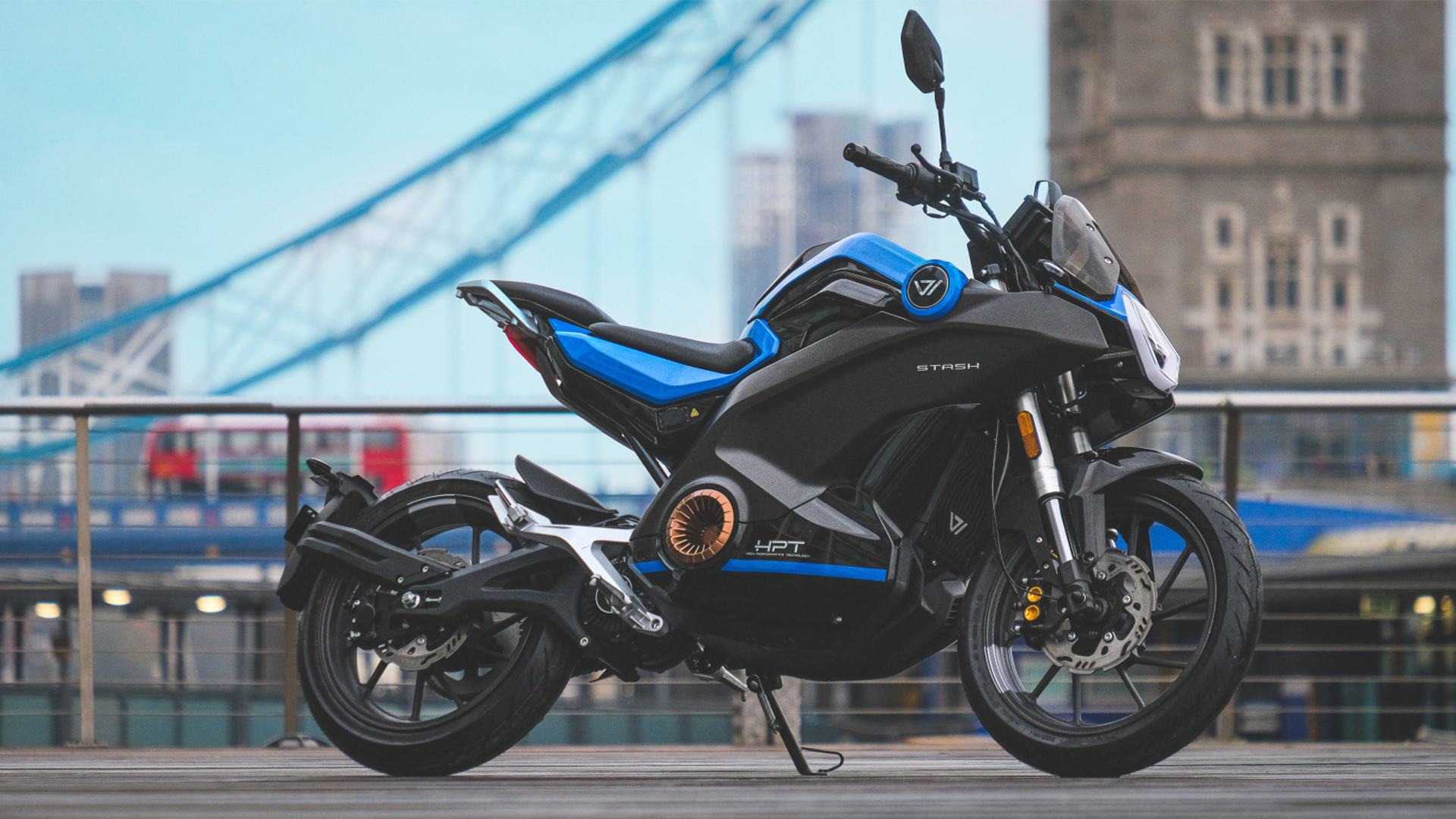
As we previously touched upon, Super Soco is slowly transitioning to Vmoto in a number of key markets and the Stash is one of the first to wear the swanky new badge. It’s a clever piece of design that makes the most of the lack of mechanical parts by introducing multiple storage options – hence the Stash moniker.
There’s a large cubbyhole between the seat and handlebars, large enough to store full face helmets or gym bags, while the 100Ah, 72V battery pack is mounted low down to improve handling.
A brand new motor delivers constant power of 8kW, ensuring it dips below the power output of equivalent 125cc petrol machines, making it legal to ride for learners, yet a boost function cheekily ups output to 15kW for rapid overtakes and a max speed of 74.6mph.
Things don’t get much simpler, as both the front and rear brakes are mapped to levers on the bars (like a glorified mountain bike), with a combined braking system gently applying both when either lever is pulled for safer and sharper stopping power.
It weighs a total of 143kg, which is heavier than the skinnier and more basic Super Soco TC Max mentioned above, but then max range is extended to a mightily impressive 93.2-miles – although expect less in the real world.
The performance and range put the aforementioned Kawasaki to shame, but the Stash is also cheaper. Priced at £6,299 (or around $7,800 / AU$12,000), it seems like veritable bargain to us.
7. Niu NQi GTS
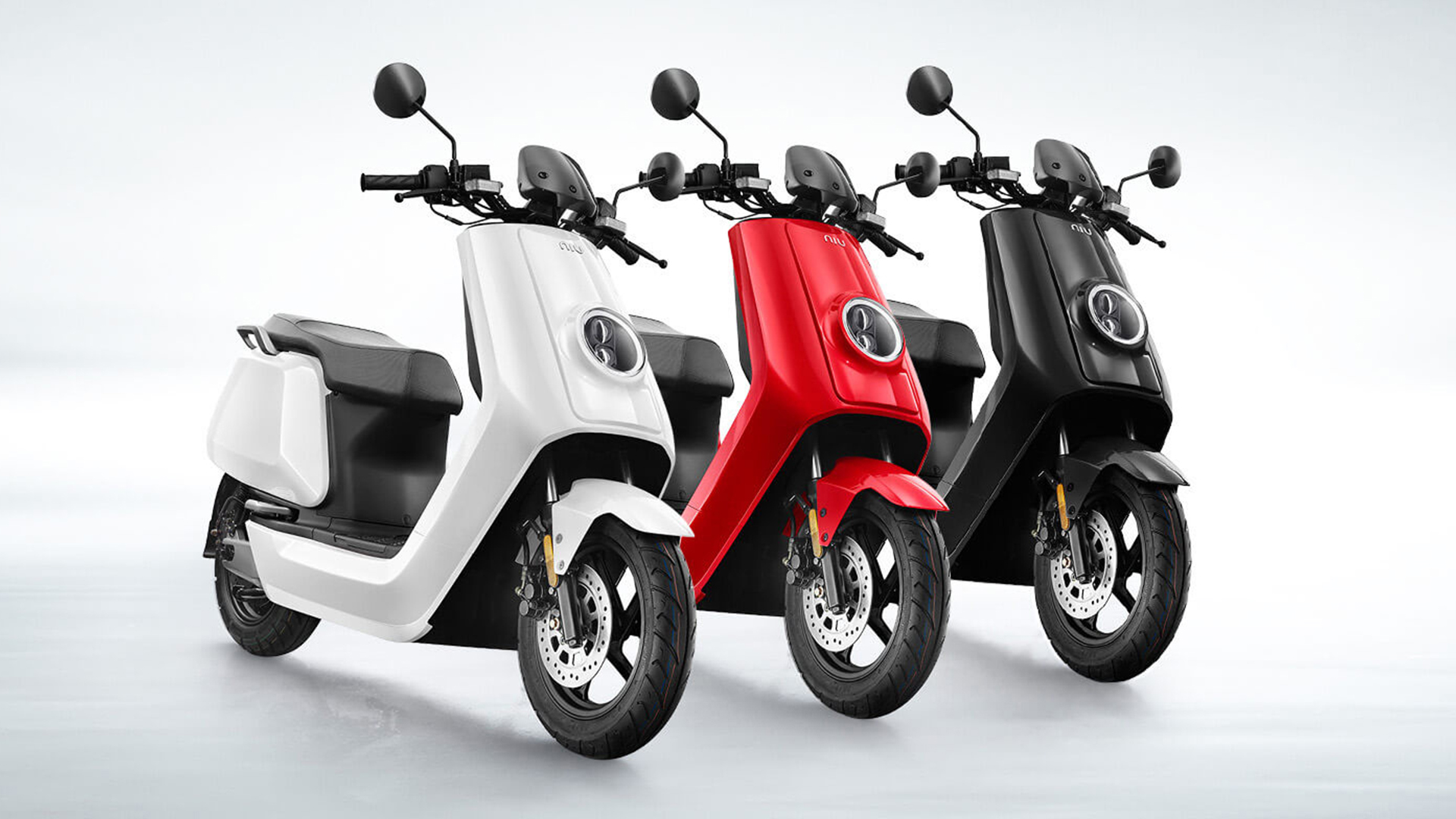
Most of the models we have mentioned here have been styled to look and ride like larger motorcycles, but sometimes the simpler and more approachable option is the 'step-through' frame of a scooter. Niu offers a range of electrified options, but the NQI GTS is our pick of the bunch.
For a start, it boasts an impressive range of around 56 miles on a single charge in the extended range models and can happily sit at around 50mph, meaning it is on a par with its petrol-powered rivals when it comes to performance.
The exterior design is neatly futuristic with nods to classic Lambretta and Vespa models, while a large chasm under the seat offers a generous 20-liters of storage for helmets and bags.
It is connected, too, offering smartphone compatibility to allow for keyless start and unlocking, with the app warning of any scooter-tampering, as well as offering key information, such as remaining charge and details of previous journeys.
Software can also be updated over-the-air, while smartphone pairing also acts as a mechanic in your pocket, with smart diagnostics just a few prods of a finger away.
Prices in the UK have recently been slashed to just £2,599, which its the equivalent of around $3,250 / AU$5,000, making it by far one of the cheapest ways to get on the open road without the worry of local emissions.







